The Door Policy
by Zoë Lescaze
Who gets inside a museum, and what happens once you enter? A once-in-a-lifetime exhibition in Washington bulldozes the category of “folk art” — but there’s a right way and a wrong way to expand institutions’ guest lists
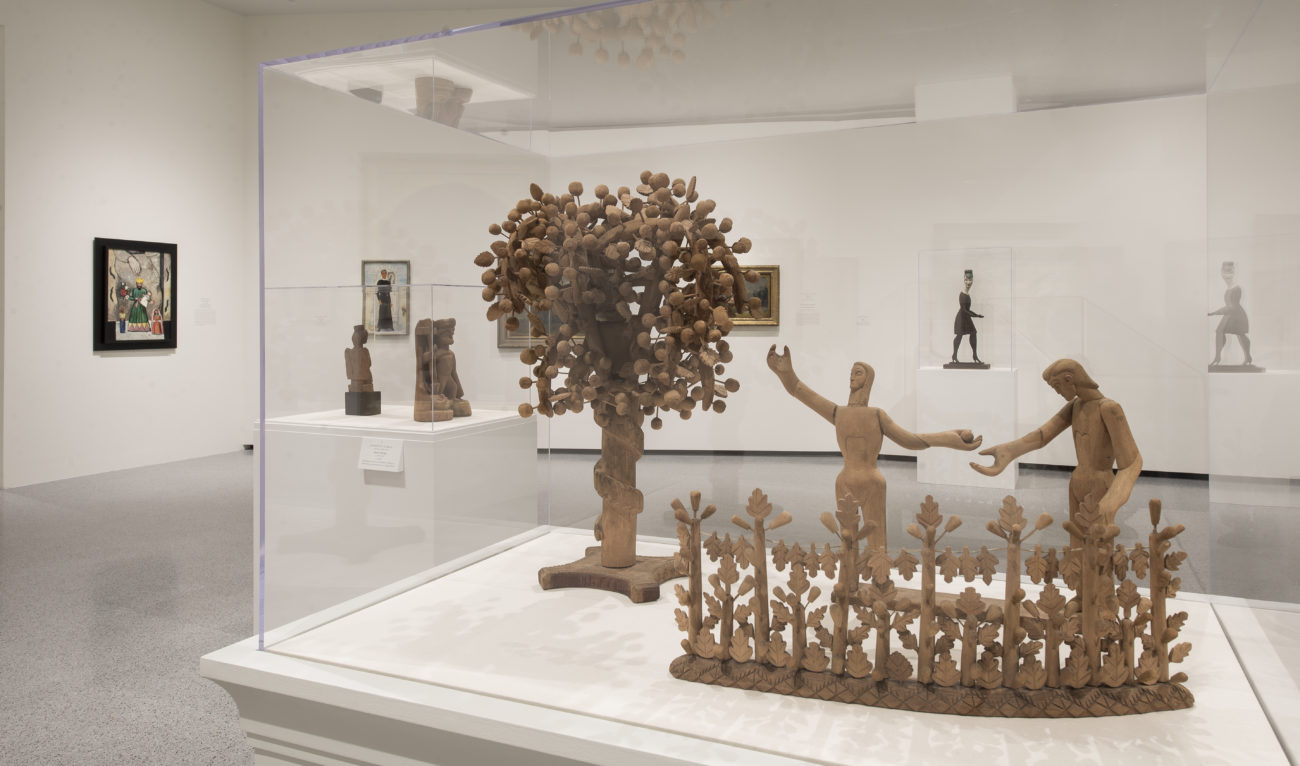
View of “Outliers and American Vanguard Art.” National Gallery of Art, Washington. 2018.
Beneath that silk blouse and blazer, the American museum curator is wearing a hair shirt. This is the age of reparative exhibitions, shows devoted to artists whom the establishment has conveniently overlooked, or consciously excluded, for the usual ugly reasons (race, class, gender, and geography, to name a few). As Confederate statues come crashing down by night, museums are frantically atoning for past prejudices by day. We are, of course, a long way from that Elysian level playing field where an artist’s identity does not affect access and opportunity. Expanding the canon is a powerful means of getting us closer.
But are the curators of these shows reweaving the record? Or are they merely lifting the fabric of art history up to the light, finding the moth holes, and patching them? These exhibitions, often accompanied by essays so vehement one could set them to “Ride of the Valkyries,” trumpet neglected artists as the true pioneers (the Swedish mystic Hilma af Klint “invented” abstract painting before Wassily Kandinsky) or as the unsung influences on more famous men (Jackson Pollock would not have dripped were it not for the marginalized Brooklyn “housewife” Janet Sobel). Others exalt obscure artists of questionable talent, whose biographies fit the progressive bill. These well-intentioned attempts to shoehorn forgotten geniuses into the same old narratives are a good start, but can only achieve so much: it’s like wedging new letters into the alphabet when what is needed is a more capacious language altogether.
“Outliers and American Vanguard Art,” at the National Gallery in Washington, marked a turning point in the evolution of reparative approaches. An ambitious reconsideration of the work variously called outsider, folk, primitive, amateur, and naïve, the exhibition deftly examined the volatile history of institutional attitudes towards untrained artists. Lynne Cooke, the show’s curator, sought to transcend superficial nods to unequal representation and, as she wrote in the catalogue, to “contest the foundational structural hierarchies on which relations between margins and mainstreams are built.”
Schoolteacher (1935), a small limestone sculpture by the self-taught artist William Edmondson, was the first work to confront visitors to “Outliers.” Humble yet assertive, commanding despite her compact proportions, the statue stared resolutely ahead with small round eyes set above a short, impassive dash of mouth. The blocky geometry of her body recalled that of Aztec gods. Chisel-grooved hair framed her features, and a pyramidal skirt sloped behind her, its ancient, architectural form adding to her air of indelibility and endurance. As a teacher, she was a fitting figurehead for the erudite exhibition; for viewers who arrived with a fixed idea of outsider art, she augured the reeducation that lay ahead.
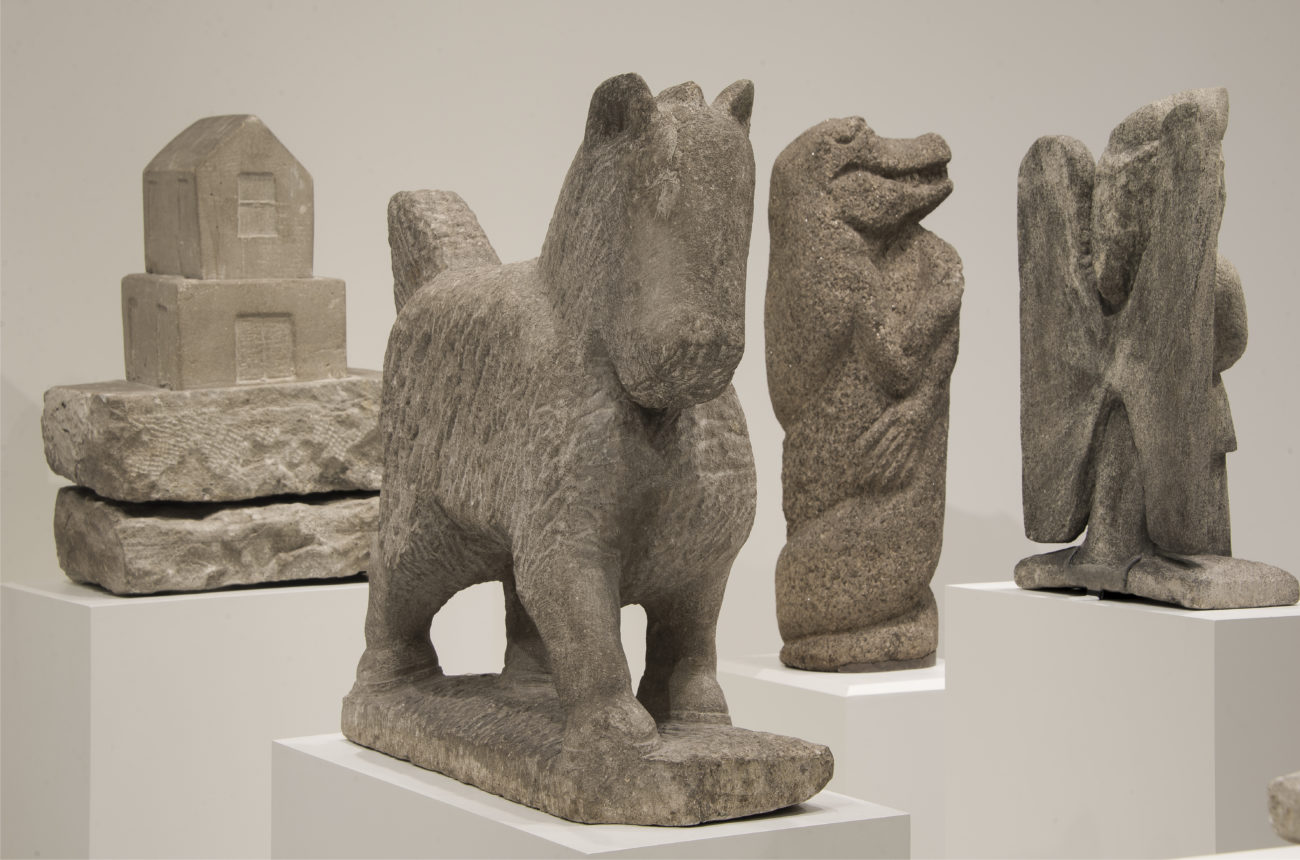
The first lesson was vocabulary. Cooke submitted the term “outlier” as a successor to the slew of unwieldy labels applied to artists who deviate, in various ways, from mainstream norms. If introducing yet another term into an already teeming arena feels gratuitous, consider the problems with “outsider.” Coined in 1972 by the art historian Roger Cardinal, it originally referred to untrained artists living on the fringes of society (or, due to mental disorders, reality): pariahs and prophets channeling idiosyncratic visions with no desire for an audience or market. Today, if “outsider” is not exactly impolite — it has become more or less synonymous with “self-taught” — it still suggests that these artists lack the agency or self-awareness of their educated peers. It also tends to conjure compulsive oddballs — schizophrenic prisoners painting doomsday with toothbrushes, Appalachian lunatics fashioning totem poles out of their toenails — rather than self-possessed individuals who have elected to work the way they do. (Similarly, “folk artist” tends to imply a murky combination of poor, black, and Southern. And, more often than not, quilts.) The biggest problem with “outsider,” and really any of these second-class categories, is that they imply there is one impenetrable art world stronghold, and that artists operate on either one side of the ramparts or the other.
Cooke’s choice is refreshingly baggage-free, and her exhibition, which chronicled nearly a century of exchange between outliers and their avant-garde counterparts (and attendant museum support) effectively dissolved the notion of an impenetrable stockade separating art-school graduates from everyone else. It’s not that the art world lacks walls, but that artists with diverse backgrounds have long been vaulting back and forth over them, and whispering to one another through the chinks.
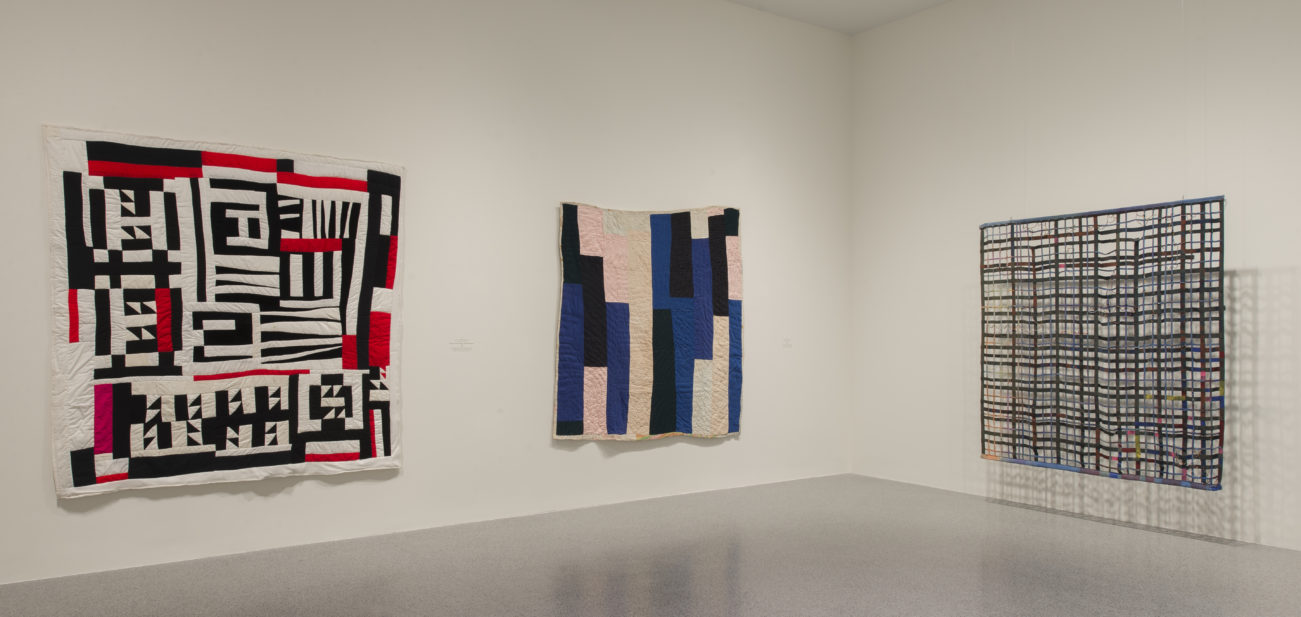
According to Cooke, boundaries were most porous during three periods of American history: the years bracketing the Great Depression, when social cataclysm enabled outliers, particularly those associated with the Works Progress Administration, to gain widespread renown (1924 to 1943); the countercultural era of the civil rights, gay liberation, and feminist movements (1968 to 1992); and the recent past, during which curators have consistently exhibited the work of outliers, alone or alongside that of trained artists, without controversy, distinction or apology (1998 to 2013).
“Outliers” was an Aladdin’s cave in which one could go spelunking in the American psyche — bucolic farms, bibles and banjos, hate crimes, sports legends, novelty and nostalgia. It was all there, in sundry media: a potpourri of paintings, photographs, drawings, textiles, and sculptures in stone, metal, wood, clay, cloth, and bone, by a mix of outliers and their educated allies, including Marsden Hartley, Jim Nutt, Betye Saar, Greer Lankton, and Kara Walker. Some pieces were polished, others were crudely made; technical finesse rarely corresponded to the art-school pedigree of the creators or to the quality of the work. Works made with the humblest means — Bill Traylor’s spidery black and blue drawings on scrap paper, Steve Ashby’s ominous, sexed-up little wooden women — were often the most arresting.
Gallery by gallery, the show demonstrated just how many roads to mainstream recognition untrained artists have traveled — or coolly rejected — and the ways in which artists of every conceivable background have aided one another. The sculptor Elie Nadelman, who trained in Poland before emigrating to the United States, was also an avid collector and promoter of vernacular art. He and his wife amassed more than 50,000 folk artifacts, the largest collection in the country at the time, and opened a museum in the Bronx in 1926. His cherrywood Hostess (1919-23), a nimble blue-haired woman in heels, shot a warm glance at viewers, as if to say she was off to fetch more ice but would be back in a moment. John Flannagan, a self-taught sculptor who worked as a farmhand for the modernist Arthur B. Davies, became a Depression-era darling. His granite Dragon (1932-33), a crocodilian creature seductively clutching itself, half-trapped in stone like one of Michelangelo’s slaves, grinned across one gallery at the prone, wide-eyed Lolita in Girl with Pigeons (1942), a painting by Morris Hirshfield, a bedroom slipper tycoon-turned-artist beloved of Alfred Barr, the founding director of the Museum of Modern Art. His nymphet lies stiffly on a scarlet sofa, feeding a bird from her lips, hemmed in by stylized fronds: a Balthus fantasy set in one of Rousseau’s jungles.
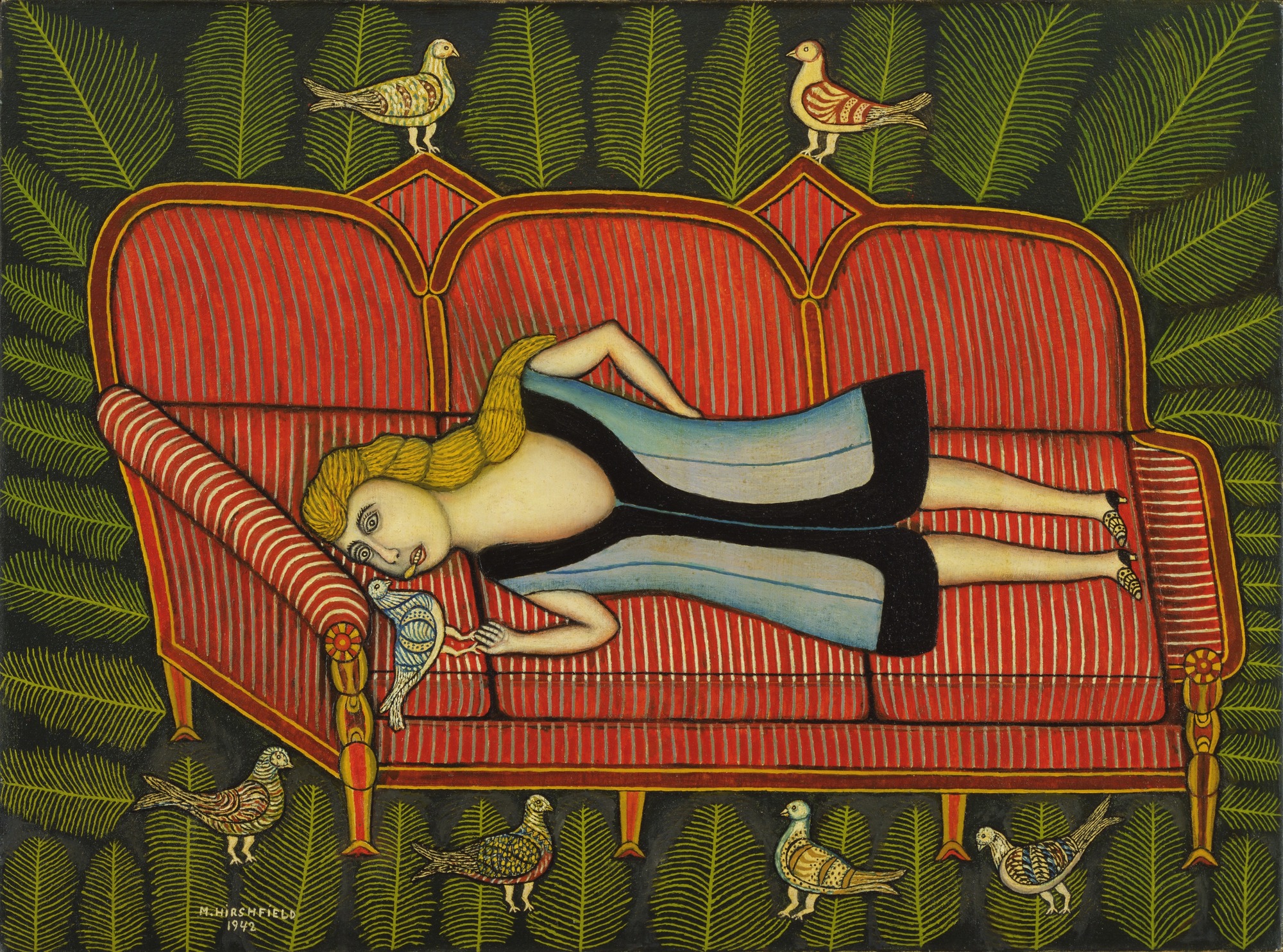
Elsewhere, Barbara Rossi’s psychedelic, anatomical tangles — in paint-on-Plexiglas and quilted satin — hung near the luminous cartographical landscapes of Joseph E. Yoakum, an untrained artist Rossi and her fellow 1970s Chicago Imagists reverently included in their exhibitions. The biomorphic nylon-stocking installations of Senga Nengudi sagged and stretched in gripping conversation with the taut army-canvas of an untitled sculpture by John Outterbridge, an untutored master of assemblage who became a leader in the movement to better represent black artists in museums.
With each artist, another threadbare stereotype unraveled. James Castle quashed the notion of the disabled country bumpkin scribbling away with no concern for an audience. The quintessential “outsider” in many ways — a deaf, illiterate recluse who never left rural Idaho or learned to speak or sign — Castle was nonetheless keenly invested in the display of his subtle, velvety drawings to a wider public. Using his signature blend of soot and saliva, Castle made illustrations of these very drawings installed inside sheds and barns. Other artists avoided the spotlight when it swung their way. Morton Bartlett, a commercial photographer who spent his free time crafting large pubescent dolls and photographing them in costume, kept his practice a secret. When a magazine article brought unwanted attention to his work, he hid it. The pictures and dolls only resurfaced, and attracted artist-collectors like Cindy Sherman, after his death in 1992.
“Outliers” was one of the savviest and most inspiring exhibitions in recent memory, not only because of the overwhelming strength of the work, but because it delivered on its ambitious curatorial claims. By showing us the dazzling pluralism of the past century, and by precisely examining the social conditions that catalyze outlier acceptance, Cooke successfully wove a richer tapestry of American art history, one that went far beyond tokenism and inclusivity for its own sake. While Cooke’s focus on the halcyon days of institutional support obscured less rosy realities in the lives of certain outliers (those whose work fell out of favor, who died bleak alcoholic deaths), she was right to assume her audiences were already well aware of historical prejudice, and to instead use “Outliers” to shine light on the lesser-known periods of support, solidarity, mutual influence, and acceptance. All the while, the exhibit kept a vigilant eye on the nature of this support, noting when condescension colored mainstream approval.
We might ask ourselves which patronizing myths cling to outliers today, and why. When artists have become global brands and nine-figure auction records are commonplace, the idea — however fictive — of hermitic creators modestly pursuing their more “authentic” visions at a remove from the three-ring circus of galleries, auctions, and art fairs may be especially seductive. Indeed, the grotesqueries of the market have recently inspired certain curators to pitch run-of-the-mill artists as renegades and garden-variety shows as guerilla warfare, as was the case at this year’s calamitous New Museum Triennial. Its adamant insistence that the emerging artists on view were in the market but not of it felt clueless at best, and opportunistic at worst.
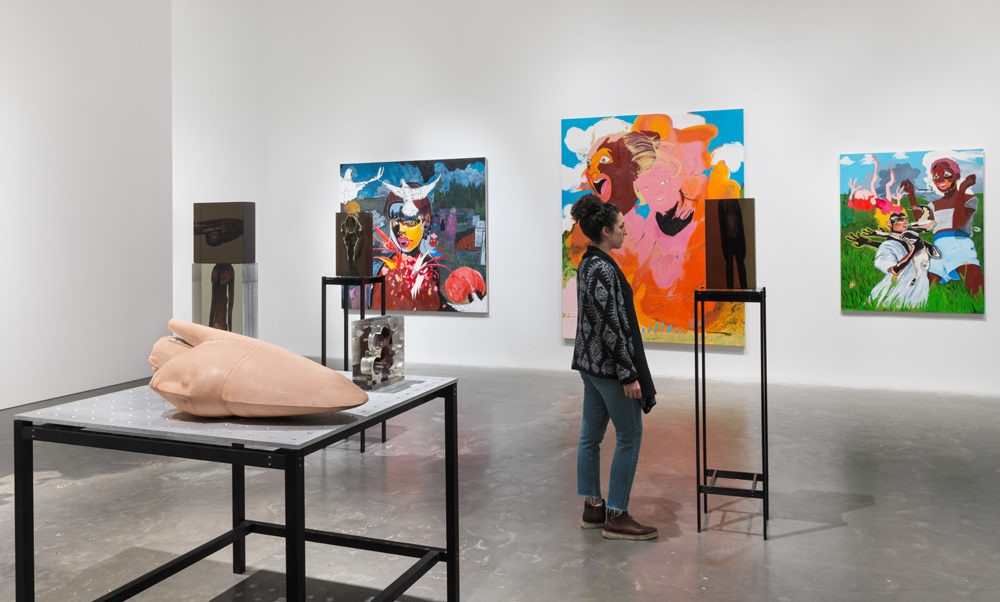
The curators, Alex Gartenfeld and Gary Carrion-Murayari, mustered 26 artists and collectives (from 19 countries) and their politically inclined projects in what seemed like a direct response to the current clarion call for greater diversity and activism. They broke from the sleek, futuristic timbre of previous triennials in favor of handmade objects in traditional media, principally paintings, collages, ceramics, and textiles. There was only a handful of videos, no performances, and no conceptual, virtual, post-internet, new media, meta-anything.
While acknowledging that these young artists (and triennial exhibitions) exist and participate in established capital networks, the curators insisted that they nonetheless manage to sabotage them by refusing “to speak the universal language of global contemporary art.” Dubious, and not just because GlobConArtese does not exist. Even if it did, the triennial artists, almost all of whom went to art school, are perfectly fluent.
As Molotov cocktails go, the projects on view were duds. An oversized installation of aluminum pallets by the Greek collective KERNEL was intended, according to the wall text, to suggest “attributes of seaports, train depots, or construction sites” and thereby critique recent Chinese shipping investments in Athens. A wall-mounted installation involving clumps of sea grass (which is disappearing in the Florida Keys) by Violet Dennison pointed to environmental degradation without actually saying anything about it.
In another gallery, six small ceramic sculptures by the Peruvian artist Daniela Ortiz stood on as many pedestals. Each one, emblazoned with the names of activists and border control agencies, was a proposal for an anticolonial monument to replace a public statue of Christopher Columbus. This topical but heavy-handed project encapsulated the whole exhibition, with its radical aspirations and clunky execution. Moreover, the sculptures epitomized the easy signaling of political righteousness that, for many museum curators, has become an end in itself.
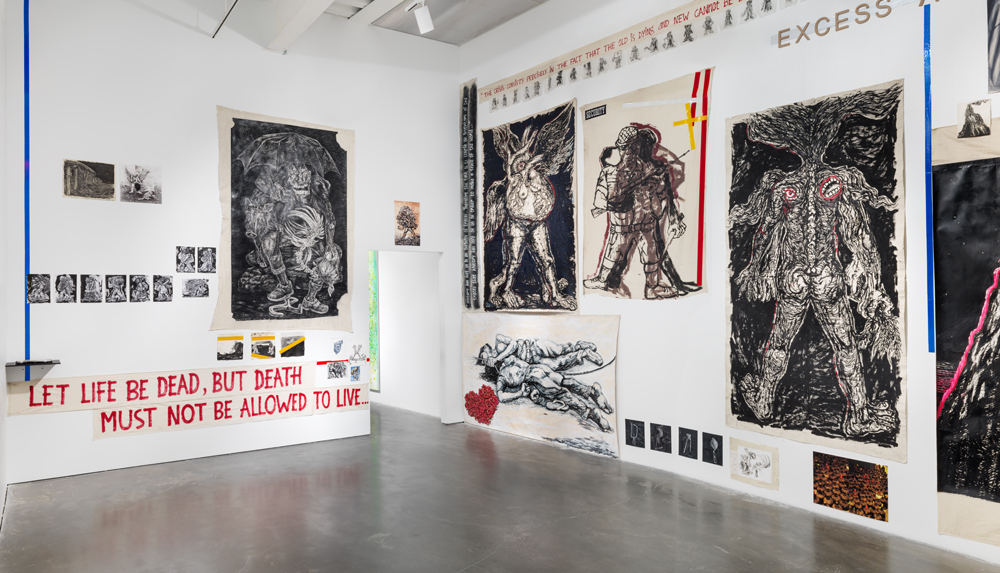
The strength of the best works in the exhibition — the kaleidoscopic abstractions of Tomm El-Saieh, the sinister sculptures of Julia Phillips, the wackadoodle animations of Wong Ping — resided precisely in their irrelevance to the curators’ revolutionary agenda, which played out in unhinged wall texts and statements. Carrion-Murayari writes in the triennial’s catalogue that the works were “calls to action against the systems of domination and exploitation characteristic of global capitalism today.” Lisa Phillips, the museum’s director, adds that the triennial artists “offer models for dismantling and replacing the various systems of power that envelop today’s global youth.” Ridiculous claims like these didn’t sabotage anything other than the exhibition, and it will take more than counterpropaganda and radical posturing to topple the monuments of prejudice still looming in the art world. As “Outliers” reveals, the most subversive approaches are often the most subtle. They do not make as much noise, but that’s because they are underground, attacking the roots.
“Outliers” arrived just in time to confront a market widening its maw for untrained artists. Christie’s began staging “outsider” art sales two years ago, and the Outsider Art Fair (which has editions in New York and Paris) will make its Basel debut this June. The commercial sector has a vested interest in maintaining the very distinctions and stereotypes that are waning in the museum world. These divisions exoticize certain artists — particularly poor black ones — and help their works sell. Branding an artist such as Edmondson an “outsider,” despite the fact that he was exhibiting at MoMA and other museums during his lifetime, is purely that: branding. Edmondson may have arrived at making art relatively late in life, but he is hardly alone in that regard. (Marcel Broodthaers, for instance, only began producing visual art at the age of 40, and yet, as a white European, his work appears in Post-War and Contemporary, not in Outsider, auctions.) The titles of Outsider sales say it all; usually schmaltzy and patronizing (“Courageous Spirits”), they also tend to imply that the creativity of these artists is compulsive rather than voluntary (“Liberation through Expression”) or that their inspiration is different from that of “normal” artists (“Beyond Imagination”).
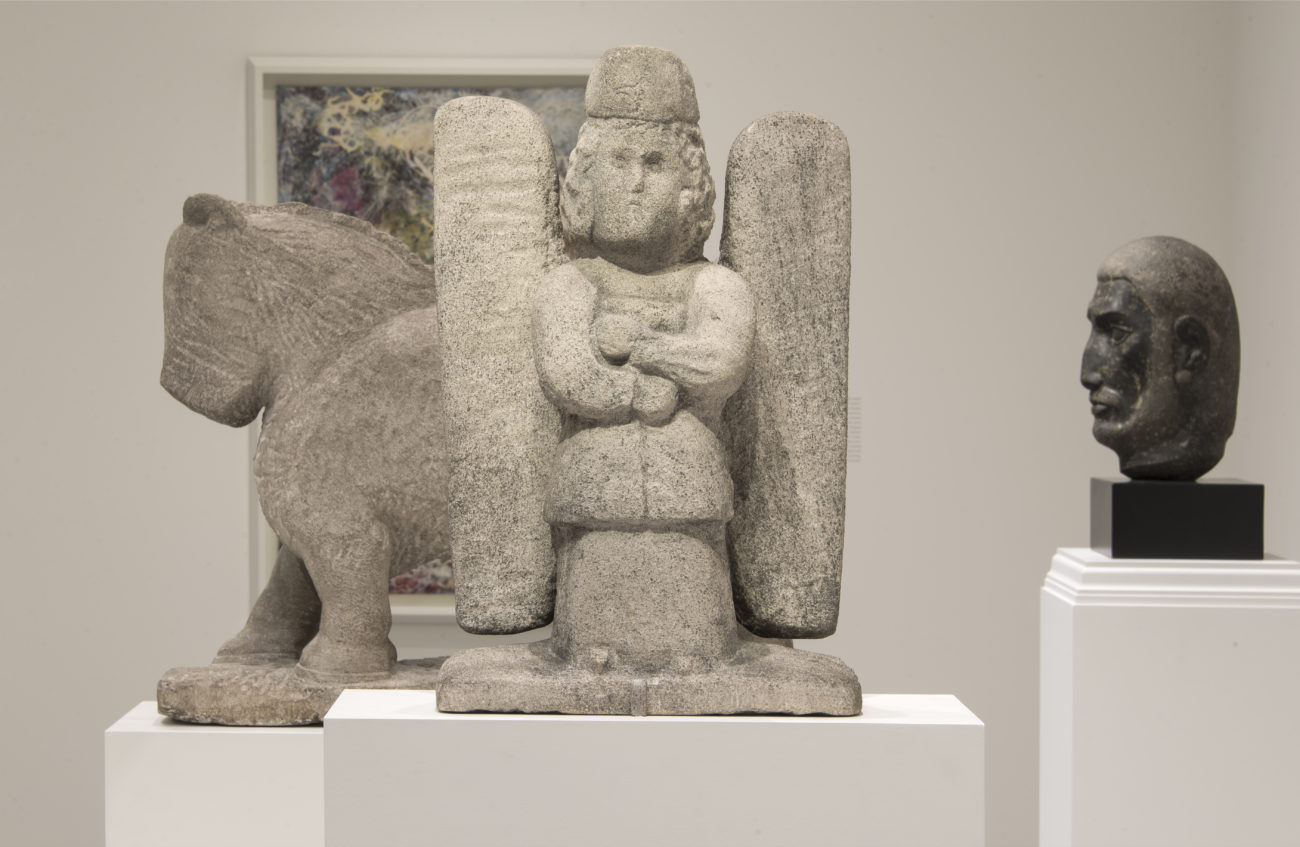
A lot of shows make a lot of noise about sabotaging the crasser mechanisms of the market. Only a few, such as “Outliers,” have the potential to actually alter the ways in which art is bought and sold. Cooke’s exhibition is not going to put Christie’s out of business. (In fact, in the short term, it will probably bolster the commercial appeal of outliers.) But by debunking the most insidious “outsider” clichés and by dissolving the distinctions between trained and untrained artists, the exhibition undercuts the very means by which markets define, value, and flack their product. The patronizing terms and pejorative categories that look outdated today are well on their way to becoming offensive. They will look not just absurd, but as archaic and inappropriate as those monuments disappearing from parks and public squares.